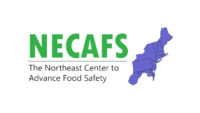Six-Step Program for the Alcoholic Beverage Industry to Comply with FSMA

Winemakers, brewers and distillers are faced with the daunting task of evaluating their compliance with an extremely fragmented regulatory landscape. The new U.S. Food and Drug Administration (FDA) regulations, applicable to the Alcoholic Beverage Industry (ABI), are derived from The Food Safety Modernization Act (FSMA) rules, and are scattered across different parts of the Code of Federal Regulations. While this industry is known for people with high tolerances, confusion is high.
The Stakes
If growers and commercial processors of ingredients intended for alcoholic beverages do not identify, address and comply with, these requirements, they can be charged with performing a “Prohibited Act” and their product can be considered “Adulterated.” The stakes are high and the industry needs a hand.
The Game Plan
You need to recognize that this is a project, not a task. Here are six steps you can take to methodically address the requirements and to assuage your anxiety and fear over FSMA:
1. Assemble the Applicable Code
Identify all the applicable code and put it in one place. You can have it in a checklist format or in a spreadsheet. Just make sure you have a spare column to keep notes.
2. Read the Regulations
Break it up, set weekly goals and engage a team (or a partner). When you reach a regulation that is confusing, flag it and keep going. The rules aren’t changing anytime soon and they dictate what industry must do to stay in business.
While a winery and a facility preparing ready-to-eat salads may be subject to the many of the same regulations, FDA provides flexibility by adding qualifiers to the regulations: “as adequate,” “as necessary” and “appropriate.” If you haven’t done so already, contact a trade association to familiarize yourself with industry standards.
3. Identify Gaps
If you read the regulations and can identify evidence that your operations and facility are in complete compliance, congratulations! If you fail to identify evidence that you are complaint with a regulation, then you have a gap that will need to be addressed.
4. Collect and Build Evidence
Compliance is not always best demonstrated by a single piece of evidence. Sometimes, a combination is best. For example, if you develop a training procedure, you may also want a training record for those trained. But not all evidence is the same. Evidence can be reduced to two types: desk and facility.
Desk evidence includes written policies, procedures or forms. Consider a training standard operating procedure, an employee training log and job descriptions. These examples altogether could be a combination of documentation that be used to ensure you, and demonstrate to FDA, that employees meet the definition of Qualified Individuals. Desk evidence can also be some other type of documentation, such as a carrier contract or FDA registration. Anything documented!
Facility evidence is an activity or design that FDA can observe during an inspection to gauge compliance. For example, FDA may inspect the exterior of your facility to see that the ground is sloped, thus preventing the pooling of water. No need for a daily log or standard operating procedure for inspecting and recording that the grounds are still sloped.
5. Train Your Team
Once you have organized your documented and facility evidence, it is time to use it to train your staff so you can effectively align your company standards with the law of the land. There may be parts that you would like to outsource (e.g., Good Manufacturing Practices) and other parts you’d like to maintain in-house (e.g., job descriptions). I prefer to use the documentation that I generate as training material and performance criteria, which makes it doubly important that this documentation is easy to read and concise.
6. Conduct an Internal Audit
Now that you have all of the evidence, training and evaluations needed to demonstrate full compliance with FSMA, you are ready to conduct an inspection of your facility and an audit of your records. You can re-purpose the same list of requirements that you used before, just add another column to add “Compliant” or “Not Compliant” and some space for notes.
When Should I Hire an Attorney or Consultant?
The most costly relationship you can have with an attorney or consultant is when you enter a consulting session unprepared and without an agenda. By doing the initial footwork, you’ll be better prepared to ask the critical questions and make immediate use of consulting advice.
Michael Kalish is managing member of Food Safety Guides, a progressive food safety and quality systems consulting firm that specializes in FSMA compliance, HACCP, third-party audit preparation and food safety and quality plan development. Michael is also Senior Technical Advisor for Food Safety at the University of California – San Diego and a Food Safety Preventive Controls Alliance Lead Instructor for Human and Animal Food.
Looking for a reprint of this article?
From high-res PDFs to custom plaques, order your copy today!






